(this story originally published here.)
Cliff Ohmart, original architect of LODI RULES and sustainability giant, announces his retirement by Randy Caparoso
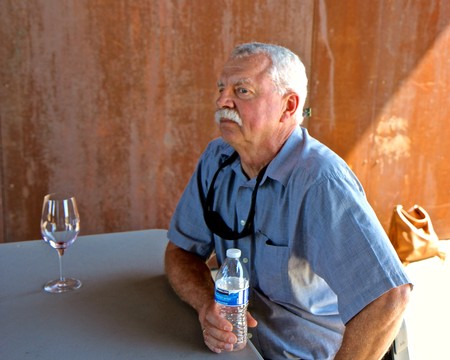
Dr. Clifford P. Ohmart, early 2017
It is largely agreed, within the American winegrowing industry, that the Lodi Viticultural Area’s crowning achievement has been the establishment, in 2005, of LODI RULES for Sustainable Winegrowing. What you might not know is that LODI RULES was originally the brainchild, for the most part, of one person: Dr. Clifford P. Ohmart.
Dr. Ohmart – who prefers to be called, simply, Cliff – was Lodi Winegrape Commission’s Sustainable Winegrowing Director for 14 years (1996 to 2009). During the past eight years he has been serving as Senior Scientist for SureHarvest (a sustainable agricultural management company).
This past December 29, 2017, Ohmart announced, through social media:
The day has finally arrived. This is my last day of work after 41 years as a scientist, IPM (i.e. Integrated Pest Management) advisor, program developer and manager, and all the other things I have done. My career has been a very rewarding and long journey. It took me to many places and I have worked with many wonderful and talented people. I hope to keep my toe in the sustainable ag waters through limited consulting work. I now look forward to the next phase in my life, which is retirement. I feel fortunate to be able to say that.
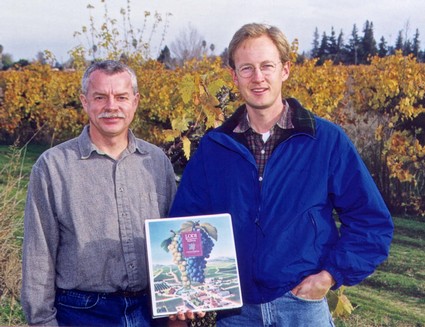
In late 1999, Cliff Ohmart and Steve Matthiasson with one of the first 200 copies of the groundbreaking Lodi Winegrower’s Workbook
Ohmart first arrived in Lodi in 1995 to do work as a UC Davis consultant to help the Lodi Winegrape Commission write a grant for Biologically Integrated Farming Systems (BIFS). Prior to that, Ohmart had acquired a Ph.D. in entomology (i.e. study of insects) from UC Berkeley before doing pest research in Australia for 13 years, followed by a brief period in Chico, California developing an IPM program for the almond, apple, walnut, prune and pistachio industries.
The impact of Ohmart’s labors is probably best described by Mark Chandler, Lodi Winegrape Commission’s first Executive Director (1991 to 2011). Chandler tells us:
Lodi’s transformation from anonymity to rising star is in no small way due to Cliff’s pioneering work in driving Lodi’s reputation for leadership in sustainability. Cliff’s unique set of attributes – the highest academic credentials, years of field experience as a Pest Control Advisor, and a demeanor that the growers appreciated and respected – turned out to be exactly what Lodi needed.
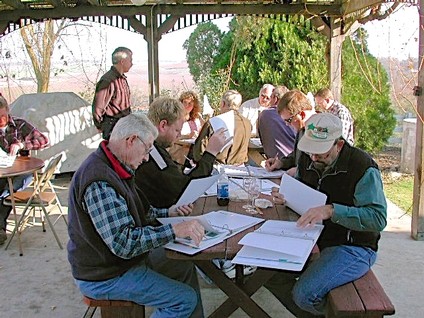
In the early 2000s, Ohmart with Lodi growers during one of hundreds of Workbook meetings
What made Lodi’s program so powerful and successful was that it came from the ground-up. The core values came from grower/leaders whose desire was to improve the district and enhance the value of their crop through sustainable practices. Cliff was the primary author of the Lodi Winegrower’s Workbook in 2000 – the first comprehensive viticulture publication since (UC Davis’) A.J. Winkler‘s in the 1970s – which was based on hundreds of hours of input from the grower community.
Similarly, when LODI RULES for Sustainable Winegrowing was launched in 2005, it was the growers who provided the foundation of the program. Cliff was able to transform their desires and their wisdom into words and programs that were industry leading. Consider the fact that the Lodi Winegrower’s Workbook was published in 1999, and the workbook for the statewide program (that of CSWA, California Sustainable Winegrowing Alliance) was first published three years later, and even then it was largely based on Lodi’s work. It was a special moment in time that he had to advance sustainability not only in Lodi, but statewide and beyond.
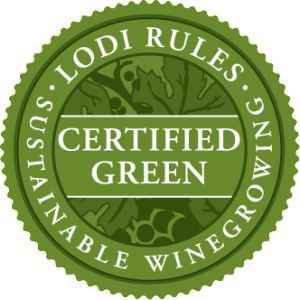
A few quick things about LODI RULES:
1. Launched, after 10 years of development, in 2005, LODI RULES was the nation’s first-ever, highly detailed workbook for third party (by Protected Harvest) authenticated sustainable grape growing
2. In the winegrowing industry, sustainability is considered to be the most effective and meaningful approach to positive-impact viticulture – therefore far more significant than, say, certified organic programs such as CCOF (California Certified Organic Farmers).
3. Lodi’s sustainable program has made such an impact on the overall agricultural industry that it now serves as the blueprint for similar sustainable programs implemented from coast to coast – from California to New York, Washington to Florida.
4. With close to 46,000 acres of certified “green” vineyards located in no less than 11 California Grape Crush Districts (including Lake County, Sonoma County, Napa Valley, San Francisco Bay, Monterey, San Luis Obispo, Yolo County, and the Sierra Foothills), LODI RULES remains the country’s largest sustainable organization (the Vineyard Team’s SIP Certified – Sustainability in Practice program is the second largest, with some 41,100 certified sustainable acres).
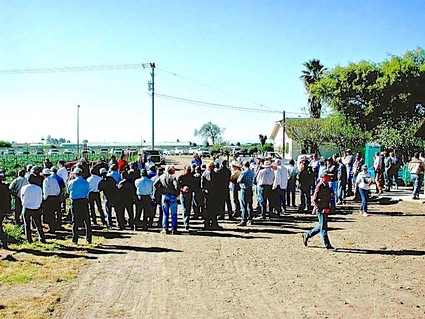
One of Ohmart’s numerous grower outreach days in Lodi
We recently asked Dr. Ohmart to give his own perspective on how Lodi’s leadership in sustainability came to be. His story is fascinating – a peek back at truly groundbreaking history:
I could write a book about my experiences in Lodi, and maybe someday I will. It started when the Lodi Winegrape Commission offered me a job to run their Integrated Pest Management program. I had worked with a lot of growers in a lot of places, but I had never worked with such a wonderful group as the Lodi growers. They are forward thinking, they have a vision, and they know how to make it happen. Working with them was by far the best experience in my career.
After three years of working on the BIFS program I was looking for the next thing to help move the Lodi wine industry forward. I came across the idea of developing a self-assessment workbook. I put together an amazing committee of Lodi growers to work with Paul Verdegaal (UCCE San Joaquin County Farm Advisor), Chuck Ingels (Sacramento County Farm Advisor), Kent Reeves (a wildlife biologist from EBMUD), and the Lodi Winegrape Commission staff; and also hired Steve Matthiasson (today, of Matthiasson Wines) to help make it all happen.
We published the first Lodi Winegrower’s Workbook at the end of 1999. The workbook was a hit locally, and later became the model for a statewide self-assessment workbook for the California wine industry (the California Code of Sustainable Winegrowing Workbook). In fact the viticulture chapters in the Code were straight out of the Lodi workbook.
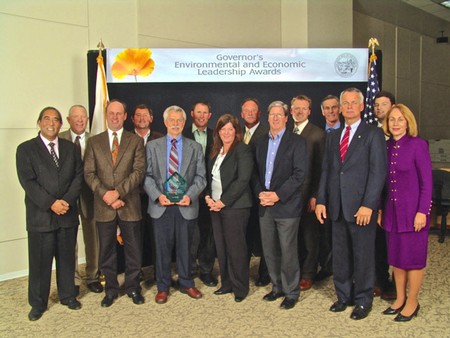
Dr. Ohmart holding 2006 GEELA (Governor’s Economic and Environmental Leadership Award) Award with Lodi growers and Lodi Winegrape Commission staff
Within a few years the wine industries in Washington and New York states developed self-assessment workbooks modeled after the Lodi Winegrower’s Workbook. In Lodi, we held over 40 workbook workshops over an 18-month period, from 2000 to 2001, attended by 265 growers. At the same time we were doing grower outreach field days, which were really well attended.
After using the workbook for about three years, some of the Lodi growers wanted to see if they could leverage, in the marketplace, their growing reputation for sustainable winegrape growing. This reputation was growing not only locally but all over California, the U.S. and even overseas. A group of growers decided to explore the idea of developing a sustainable winegrowing certification program that could be used in marketing Lodi wine. Over a 2-year period a committee similar to the one that helped put the Lodi Winegrowers Workbook together developed the farming practice standards that would become known as LODI RULES for Sustainable Winegrowing. The program was launched in 2005 with 6 growers certifying 1,500 acres of vineyards.
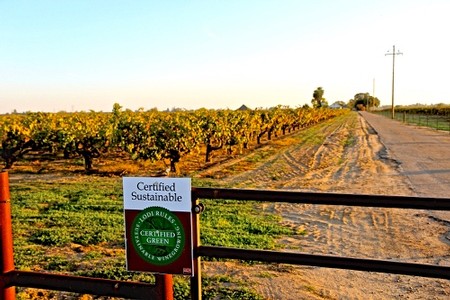 The LODI RULES program has grown in leaps and bounds ever since; in a large part because wineries like Michael-David and Bogle are paying growers bonuses for certified sustainable wine grapes. I believe it was in 2008 when Lodi growers agreed to allow vineyards outside Crush District 11 to be certified according to the LODI RULES.
The LODI RULES program has grown in leaps and bounds ever since; in a large part because wineries like Michael-David and Bogle are paying growers bonuses for certified sustainable wine grapes. I believe it was in 2008 when Lodi growers agreed to allow vineyards outside Crush District 11 to be certified according to the LODI RULES.
In 2017 120 growers applied for and were awarded certification on well over 45,000 acres of vineyards, which includes 24,000 in Crush District 11 (i.e. Lodi) alone, plus 21,000 acres in other parts of California. LODI RULES was the first third-party accredited and audited sustainable winegrowing program in California, and became the stimulus for certified sustainable programs in other regions as well as the state’s CSWA.
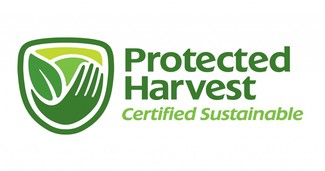
Logo of Protected Harvest, which audits and certifies LODI RULES vineyards
While the numerous sustainable organizations in and out of California – which include systems associated with regional organizations such as Sonoma County Sustainability, Napa Valley’s Napa Green, Willamette Valley’s LIVE, Walla Walla Valley’s VINEA, New York’s VineBalance, Long Island’s LISW, and British Columbia’s SWBC – have all been shaping their own science based versions of the sustainable practices first developed in Lodi, primary motivations vary as much as details of execution (every region finds ways to deal with their unique terroir-related circumstances on top of their own economic challenges and marketing objectives).
In recent conversations with numerous SIP Certified growers, for instance, we have found that most members are strongly motivated by environmental concerns, and seek a practical alternative to strictly input-based “organic” certifications.
According to Lodi Winegrape Commission’s current Sustainable Winegrowing Director Dr. Stephanie Bolton, “If you ask LODI RULES growers in Lodi why they subscribe to sustainability, the No. 1 reason given is so their children can learn how to grow sustainably… in a region known for its multi-generational farming, family legacies are a big deal.”
In a conversation in early 2017, Ohmart reminded us of why a LODI RULES “Certified Green” seal on a wine bottle label truly means something: “For the average consumer, the benefit is twofold – 1) they know that the grapes that made the wine were grown responsibly, and 2) that there is an intrinsic level of quality attached to a certified sustainably grown bottling.“
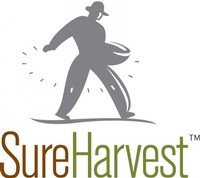 During the past eight years Ohmart’s work with SureHarvest has been, perhaps, even more ambitious: towards a design, development and implementation of sustainability programs for a wide range of specialty crops, including almonds, cut flowers, hazelnuts, cherries, and produce. There may soon come a day when sustainable certifications are more commonly identified with the highest levels of product safety, environmental responsibility and quality in the marketplace. It certainly already means more when it comes to wine products.
During the past eight years Ohmart’s work with SureHarvest has been, perhaps, even more ambitious: towards a design, development and implementation of sustainability programs for a wide range of specialty crops, including almonds, cut flowers, hazelnuts, cherries, and produce. There may soon come a day when sustainable certifications are more commonly identified with the highest levels of product safety, environmental responsibility and quality in the marketplace. It certainly already means more when it comes to wine products.
In fact, Ohmart’s global influence on the agricultural industry goes well beyond standards and practices. Kris Beal, M.S. – longtime Executive Director of Vineyard Team/SIP Certified – puts Ohmart’s impact this way: “Cliff’s contribution to the sustainable ag movement can’t be overstated. Understanding both the science and growers’ unique perspective, he’s been able to influence both behavior and culture. I’m grateful that Cliff led the way for so many of us in this important work.”
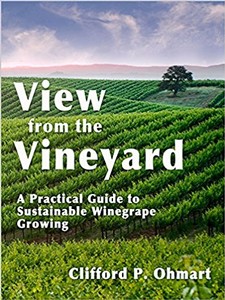
If you are interested in doing further reading into Dr. Ohmart’s works, you can also find his latest book, entitled View From the Vineyard: A Practical Guide to Sustainable Winegrape Growing (Board and Bench Publishing, 2011). If you dig further, you will find two more Ohmart authored books, plus another 30 research articles published by Ohmart in international peer-reviewed journals. In addition, Ohmart has presented over 350 seminars, conference papers and symposia papers at universities, for government research organizations and grower groups throughout the U.S., Canada, Australia, New Zealand, Sweden and Finland.
Will it be even possible for Ohmart to completely “retire?” However things shake out, Lodi – and the rest of the viticultural and agricultural worlds – will always have much to thank him for!